Hidden in plain site in Milwaukee: 14 city secrets everyone should see and know about
It’s the details that create the pattern. A large city, no less than an intricate mosaic, is the sum total of uncounted individual pieces that stand out boldly in some places, show significant wear in others, and are sometimes so hard to see that they practically vanish into the broader landscape.
Those secret pieces, or secret places, have always been a special interest of mine. I’ve probably driven or biked down every street in Milwaukee, usually for book projects like the fondly remembered "Discover Milwaukee Catalog" (1986) or the more ambitious "Milwaukee: City of Neighborhoods" (2015), and I’ve logged hundreds of miles in the suburbs as well. Over the years I’ve kept an informal list of places notable for both their interest and their obscurity, and this month’s column describes some of my favorites.
The list doesn’t include any easy oddities. I don’t mention Frank Lloyd Wright’s American System-Built homes on Burnham Street or the Marian Shrine on N. 68th. You won’t find directions to Barnacle Bud’s or a shout-out to Brewer’s Corners in Forest Home Cemetery. My selections require more granular knowledge and perhaps a closer acquaintance with the Milwaukee map. And so here, in no particular order, are 14 secret Milwaukee places I’ll bet most of you have never seen.
Kaszube’s Park
For nearly 50 years, from the 1870s to the 1920s, Jones Island was a commercial fishing village dominated by immigrants from the Kaszuby region on Poland’s Baltic seacoast. This park, the smallest in Milwaukee, was the Kaszubs’ last stand. When the Island was cleared for civic improvements in the 1920s, a tiny group of holdouts hung on until they were finally evicted in 1943. A remnant of their hideaway was declared a park in 1974, and it has become the site of a Kaszub reunion held every August. Go to the north end of Carferry Drive on Jones Island.
Bridge to nowhere
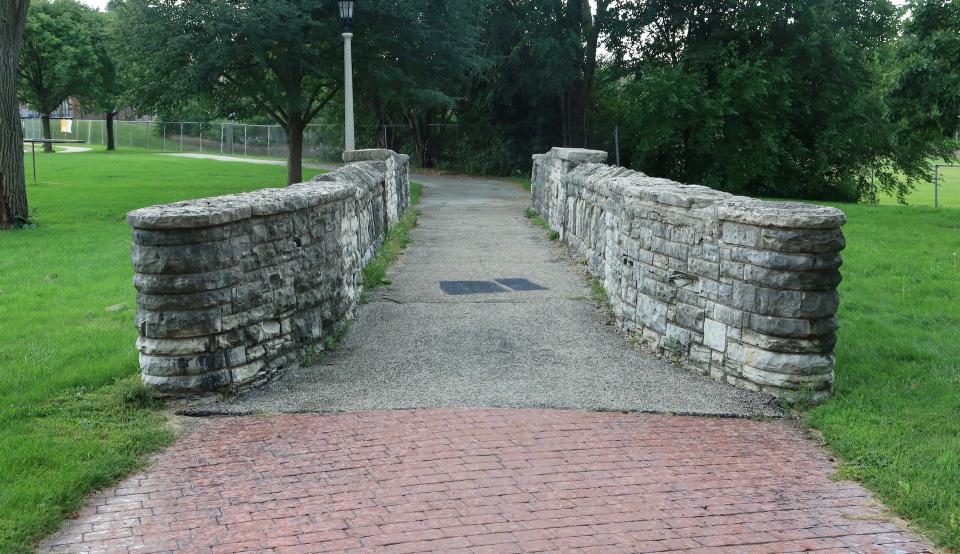
No, I don’t mean the Dan Hoan Bridge circa 1974. This one’s in West Allis, and it was built over flood-prone Honey Creek when New Deal work relief crews widened and lined the stream in the 1930s. Continued flooding convinced authorities to cover Honey Creek in the 1970s. West Allis buried the creek but left the Lannon stone bridge in place, and now it’s surrounded by grass, spanning nothing at all. West Allis historical park, S. 84th St. and National Ave.
German gingerbread house
The house itself is unusual, a half-timber beauty, but its location is the real wonder. Built in 1894 by a Vienna-born woodcarver, the home stands in the middle of a 1960s-era North Side housing project. The Robert Machek residence was supposed to come down with all the other buildings that were urban-renewed out of existence, but its owners fought City Hall and won. Today the home stands out as a distinguished senior citizen in a gaggle of architectural adolescents. 1305 N. 19th St.
Falk Brewery
The last building of a brewery that was once Milwaukee’s fourth-largest stands on the south rim of the Menomonee Valley, just west of the Mitchell Park Domes. German-born Franz Falk opened his Bavaria Brewery there in 1856 and rose through a crowded field to rub competitive elbows with Pabst and Schlitz. His heirs sold out to Pabst in 1892, but the Cream City brick icehouse, built in 1870, still stands. Franz’s son, Herman, moved his Falk Co. to the filled wetland north of the brewery in 1900, and Falk gears are still made there. Private property, but plainly visible from the north end of S. 29th St.
Pompeii Square
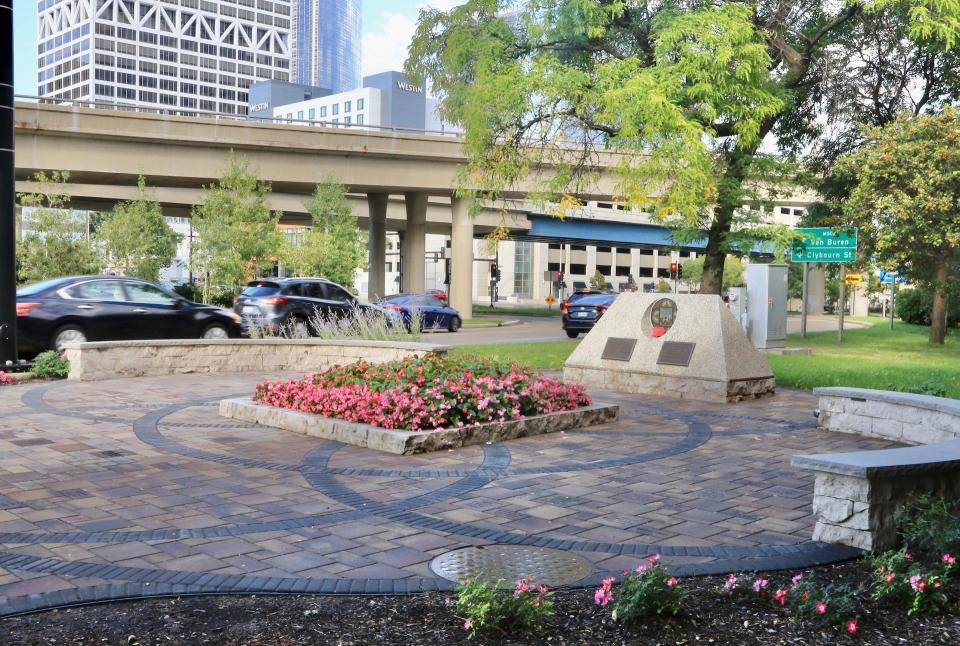
Tens of thousands of motorists pass this wisp of green space every day, but I doubt that even a handful notice it. The square’s modest concrete monument stands across Jackson St. from the site of Blessed Virgin of Pompeii Church, built in 1905 by the Third Ward’s Sicilians. The “little pink church” was the neighborhood’s spiritual anchor until it was torn down for freeway construction in 1967 — shortly after being declared Milwaukee’s first official landmark. Foot of Jackson-Van Buren off-ramp on eastbound I-794.
Unit Drop Forge
Watching Milwaukee manufacturers at work isn’t easy, particularly as their numbers have dwindled, but it’s still possible at this venerable plant, at least on occasion. If you’re lucky, the side louvers will be open, revealing a hellish scene of men wrestling red-hot billets from fiery furnaces and pounding them into useful shapes on earth-shaking forge hammers. The smell of hot metal is a bonus. S. 62nd St., a dead end, south of Burnham St.
Statue of Commerce
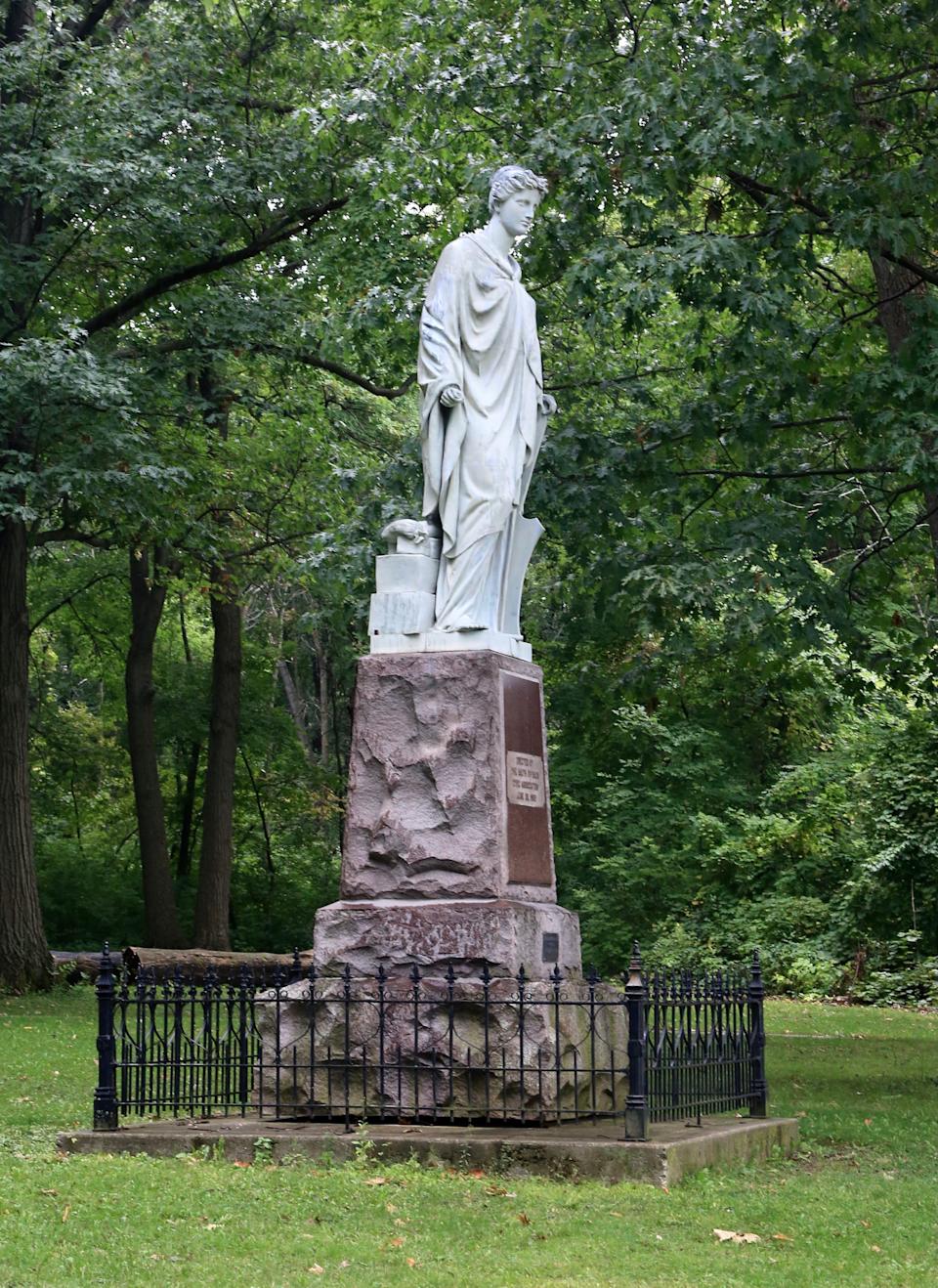
She looks a little forlorn, this Greek goddess, tucked into a quiet grove of oaks and hickories in Jackson Park. Representing the spirit of commerce, the 1881 statue once adorned the entrance to the Grain Exchange on Broadway and Michigan. She was declared surplus in 1909 and exiled to the South Side park, where she is still, as the inscription reads, “a silent witness to the progress and growth of Milwaukee.” South bank of the Jackson Park lagoon, off Kinnickinnic River Parkway.
Ghost signs
Their creators are long gone, as are the products they promoted, but advertisements painted directly on brick walls persist by the dozens in the oldest parts of town. Although the neighborhood gets a little shinier every year. Walker’s Point has perhaps the greatest number. See if you can find the “Ziegler’s Giant Bar 5¢” sign high on the back of the building at 408 W. Florida St. or make out “World’s Breakfast Quaker Oats” on Pierce St. at S. Second.
Milwaukee’s other City Hall
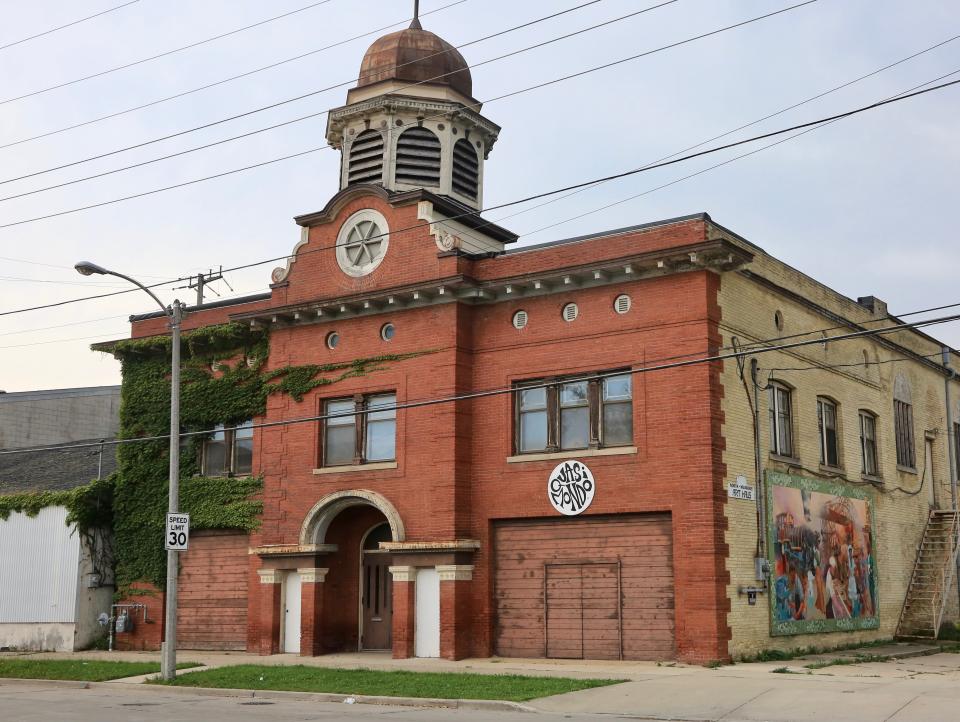
You’re no doubt familiar with the towering landmark at 200 E. Wells, but there’s another historic seat of government on the north side. It was built in 1901 as the municipal hall and firehouse for North Milwaukee, an industrial suburb incorporated in 1897. When local residents voted overwhelmingly to consolidate with Milwaukee in 1929, the building was redundant. It has since housed a succession of public and private tenants, most recently Quasimondo Physical Theater. 5151 N. 35th St.
Unique streets
Most Milwaukee streets follow the standard Midwestern grid pattern, but there are some striking exceptions. Elliott Circle, near 60th and North, is a perfect pie sliced into 14 equal pieces that taper to a shared alley where the garages practically touch each other. Oak Park Court, just off Hawley Road south of Interstate 94, is a dead-end rectangle of sturdy working-class homes bordered by two cemeteries. The area is well-tended, and the neighbors? Dead silent.
Unique addresses
There are lots of them in Milwaukee, especially where diagonal streets encounter the rectangular grid. Two of my favorites are in Bay View. One home in the 1900 block of E. Rusk Ave. rests securely in a triangle of alleys. (Good luck, Uber drivers). One mile north, just off Kinnickinnic Ave., you’ll find Brunks Lane, which is exactly one house long.
Faded glories

Milwaukee has dozens of wonderfully restored mansions, but there’s a melancholy appeal to grand old homes left in the dust by the march of progress. The Gerhard Winner residence, 2532 W. Wisconsin Ave., is fronted by a check-cashing place and a fried-chicken restaurant today, but the lines of this 1897 Grand Avenue landmark are still visible. The Jacob Nunnemacher mansion, 3774 S. 27th St., was once the focal point of a pioneer whiskey distiller’s 600-acre estate. After years as the community center of a trailer park, the 1854 home stands vacant today, an Italianate Cinderella awaiting the touch of a fairy godmother with deep pockets.
WPA murals
You’re not likely to drop by unless you’re a local resident, but the West Allis post office has a pair of lovely woodland murals painted in 1943 by Frances Foy, a Chicago artist working for the federal Works Progress Administration. Intended to lift the spirits of a populace beset by depression and war, the murals continue to charm nearly 80 years later. 7440 W. Greenfield Ave.
Conservancy for Healing and Heritage
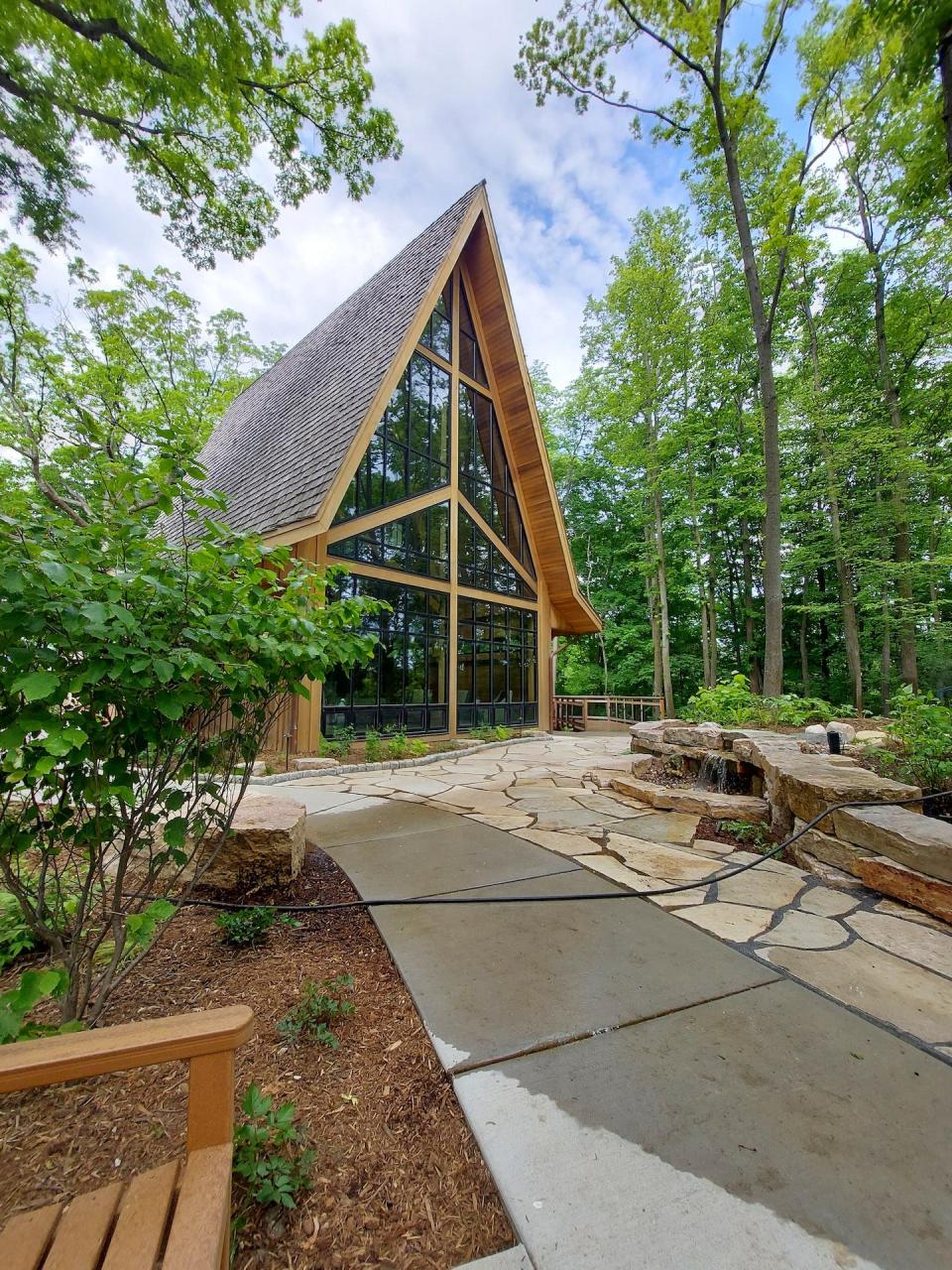
This Franklin beauty spot shouldn’t be a secret at all, but it’s still largely undiscovered. Perched on a glacial ridge overlooking one of Milwaukee County’s few kettle lakes, it was created in 2003 as a partnership of the Reiman Cancer Center and the Polish Center of Wisconsin — two neighbors on the lake. Now an independent nonprofit, the Conservancy has developed a healing garden, hiking trails, and a stunning Polish-inspired chapel that’s open every weekday. Stop by for a few moments of guaranteed tranquility. North of the Reiman Center parking lot, 7410 W. Rawson Ave.
My list of Milwaukee secrets is, I know, incomplete, idiosyncratic, and largely incidental. I firmly believe, however, that these grace notes add significant life to our landscape, and the list isn’t a bad measure of what might be termed your Milwaukee cred. Have you seen all these sights? Then welcome to my little urban Scout troop and please accept a Master Milwaukeean merit badge. If any of these places are largely or entirely unfamiliar to you, there’s an easy remedy. Whether you’re a native or a relative newcomer, get out and explore your hometown, keeping your focus at the grassroots level. You never know when you might discover something overlooked, undersung, and filled with the elusive essence of Milwaukee.
John Gurda writes a column on local history for the Ideas Lab on the first Sunday of every month. Email: mail@johngurda.com
More: It may be in the genes, but DNA testing offers a bumpy ride to the past
This article originally appeared on Milwaukee Journal Sentinel: 14 Milwaukee city secrets everyone should see and know about

